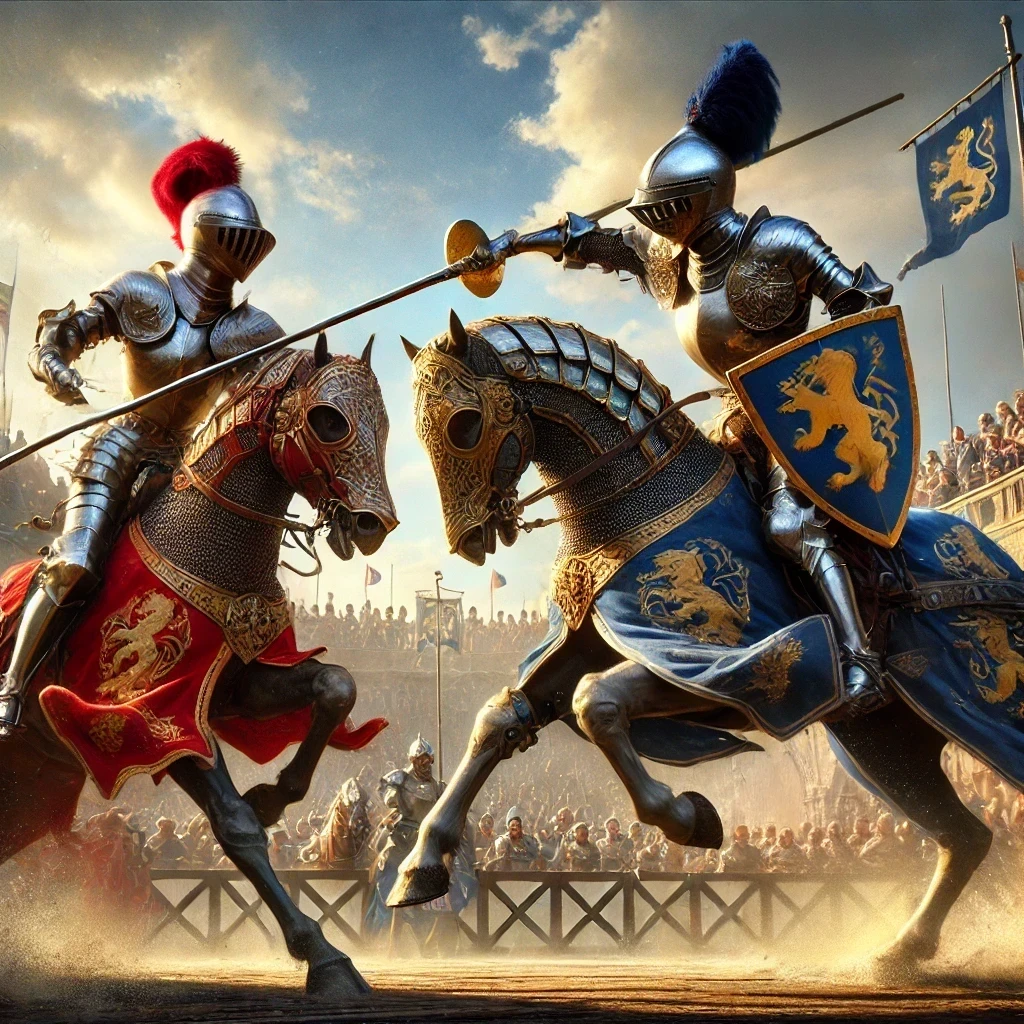The Feast of the Damsel
The Feast of the Damsel is the grandest annual celebration in Clairvaux, honouring the divine lineage of the Queen, who is believed to be a direct descendant of the Lady Herself. It is a time of pageantry, revelry, and martial spectacle, a six day-long festival marked by grand tournaments, solemn religious observances, and joyous feasting across the Queendom.
Though celebrated throughout all eight Duchies, the heart of the festival is held in Rousillon, where the Queen herself presides over the festivities.
Origins of the Feast
The Feast of the Damsel dates back hundreds of years, to the reign of Queen Céline I, who first declared that the divine bloodline of the Lady should be commemorated annually. The name of the festival—“The Damsel”—refers to the Lady Herself before she ascended to godhood, when she walked among mortals as a warrior and leader against Fyredel’s draconic forces. It is both a celebration and a solemn reminder of the Queen’s sacred duty. As the living heir of the Lady, the Queen is expected to rule with divine grace, wisdom, and martial strength, upholding the faith and protecting the people from external and internal threats. The festival is as much a reaffirmation of the Queen’s role as it is a celebration of her lineage.Events & Traditions of the Feast
The Feast of the Damsel is divided into three distinct phases, each with its own traditions:1. The Day of Benediction (Day 1)
The first day is one of religious solemnity, where the Queen and the Ecclesiarchy reaffirm the sacred pact between throne and faith.- The Pontifex anoints the Queen in a ceremony before the Great Cathedral of the Lady, marking her as the living vessel of the Lady’s will on Golarion.
- The Queen then enters a period of silent prayer, kneeling before the Altar of the Lady, where it is believed all past monarchs have received divine insight.
- Processions of clerics and paladins march through Rousillon, blessing the people, while temples throughout the Queendom hold prayers and hymns in honour of the Lady and the royal lineage.
- A great fire is lit in the city square, symbolizing the Lady’s eternal flame, which will burn for the entire festival.
2. The Days of Chivalry (Days 2-5)
Following the Benediction, the festival transforms into a celebration of knightly valor and martial prowess. These four days of tournaments and contests are the highlight of the festival, drawing thousands of spectators and participants.- The Grand Joust: The most prestigious event, where the best knights from across Clairvaux compete in honour of the Queen. The victor is awarded the Queen’s Favour, a ceremonial blessing that marks them as the Champion of the Lady for the year.
- The Battle of Champions: A grand melee, where warriors fight in teams representing their duchies. It is a test of skill, strategy, and endurance.
- Archery & Swordsmanship Contests: Elite archers and swordswomen compete before the Queen, showcasing their skill in feats of precision and mastery.
- The Hunt of the Golden Stag: A traditional symbolic hunt, where noblewomen and warriors ride into the forests near Rousillon to pursue a great white stag. Whoever lands the first strike upon the beast is said to be blessed with good fortune for the year.
3. The Night of the Lady’s Dance (Final Night)
The final night of the festival is the most joyous and extravagant, marking the end of the celebrations with great feasting, music, and revelry.- The Queen hosts a grand masquerade ball, where nobles from across the Queendom gather in the Hall of Radiance for a night of dancing, intrigue, and courtly games.
- Bonfires are lit across the city, and people dance in the streets, drinking and celebrating until dawn.
- In a dramatic finale, the Queen leads a cavalcade through Rousillon, riding at the head of an illuminated procession carrying the Flame of the Lady through the city.
- The festival ends with the extinguishing of the Great Fire, signifying that the celebration has ended, and the people must now return to their duties and service.
Regional Variations
Though Rousillon hosts the grandest celebration, every Duchy has its own interpretation of the Feast of the Damsel:- Lavergne hosts a mock naval battle on its great lakes, representing the Lady’s legendary journey across the seas before the war against Fyredel.
- Montazet holds great equestrian games, where riders demonstrate their skill in mounted combat and endurance.
Political & Religious Significance
- A Show of Strength: The Feast of the Damsel is not just a celebration—it is a demonstration of royal and military might. The Queen’s participation in the jousts, ceremonies, and processions reminds the people that her rule is divinely sanctioned.
- A Test for Aspiring Nobility: Many young knights see this festival as a way to prove themselves, earning recognition and prestige.
- A Time of Unity: Despite rivalries between the Duchesses, the Feast serves as a rare moment where the entire Queendom comes together, reinforcing a shared national identity.
Remove these ads. Join the Worldbuilders Guild










Comments